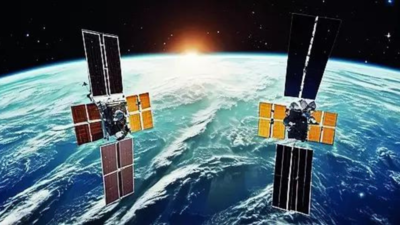
BENGALURU: Isro's Space Docking Experiment (Spadex) will require 10 days after the launch to achieve the rendezvous and docking. The two Spadex satellites will also carry other technology demonstrator instruments, including one that will be useful in ensuring astronaut safety.
In an exclusive interview with TOI, M Sankaran, Director, UR Rao Satellite Centre (URSC), said the satellites — chaser and target spacecraft — that are part of the mission will leave from Bengaluru to the spaceport in Sriharikota on Tuesday.
Only a handful of countries have mastered the docking technology, which is crucial for a variety of space missions. While Spadex is the first step in this direction, mastering the
rendezvous and docking technology
is critical for India’s
Chandrayaan-4
, human spaceflight programme, and the ambitious space station project.
As per Isro’s latest plan, the mission to be launched on a PSLV is expected to happen on December 30. The space agency has issued the Notice to Air Missions (Notam), which is mandatory for any launch, with a window of December 30 to January 13.
“At the launch, two satellites will be launched separately but by the same launch vehicle. Initially, they will be released individually with a small relative velocity between them. The distance between the satellites will grow. After they reach a distance of about 10 km-15 km, the drift between the two satellites will be arrested, and the systems on board will be evaluated,” Sankaran said.
Following the systems health check, one satellite (chaser) will be moved closer to the other in incremental steps. “First, it will approach about 5 km, then to 1.5 km. The satellites will be brought closer and closer, ultimately leading to docking. The entire procedure ensures that the satellites are launched separately but will eventually come together in a controlled manner,” Sankaran added.
Imaging & Astronaut safety
While the main focus of the satellites will be on the docking demonstration, they will carry some bonus payloads.
“Each satellite is equipped with an imaging payload. And, we are also sending a radiation monitoring payload. The
radiation monitoring payload
is designed to estimate electron and proton radiation in space, which is crucial for future human space flights. This is important because radiation can be harmful to astronauts’ health,” Sankaran said.
He said ISRO already flew some radiation monitoring payloads earlier and that the one on the Spadex satellites will be a new type. “The idea is to test different types of radiation monitors across various missions. The goal is to develop and refine radiation monitoring instruments that can eventually be used in human space missions,” he said.
Similarly, the imaging payloads are also tech demos, aimed at exploring how to achieve high-performance capabilities in smaller, nano-sized satellites. By testing these compact payloads, the mission hopes to pave the way for future remote sensing satellites that can be smaller and more efficient. This approach allows for technological advancements and potential cost reductions in space exploration and satellite technology.












 English (US) ·
English (US) ·